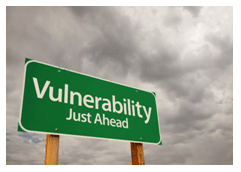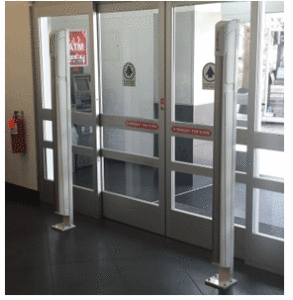
Leadership. It varies from person to person and company to company. As a business owner how you lead your team impacts the overall health and prosperity of your store. Does your team work for you and follow direction out of a feeling of obligation or fear? Do your employees do what they are told to do because of a concern that failing to do so could result in the loss of their job? If this is the feeling of the store associates they may not be doing more than the minimum to get their jobs done. This affects customer service and how employees interact with patrons. Poor service results in poor sales and inefficiency in operations. Leadership is as important as customer service and I would argue the two go hand in hand. I cannot think of a customer service driven business where the delivery of customer service thrived when the managers were loud, bossy or came across as distant.
Personally I have attempted to incorporate in my own management style a mix of a couple leadership influences. One is advocated by John Maxwell. The first book of his I read was, “The 21 Irrefutable Laws of Leadership”. In his book he lays out what he describes as 21 principles that apply to leaders. There were a couple of his points that I made a conscious effort to apply (some were already an integral part of who I am) when I was leading my Loss Prevention team, my freight unload/ stocking team and as a Manager on Duty. Two of the characteristics Mr. Maxwell lists, “The Law of Solid Ground” and “The Law of Empowerment” are dimensions I believe can make a major shift in how a store team functions. The first idea is that people have to trust their leader. As a leader do you follow through on commitments to your team? Do you treat every person equally and fairly and do you provide honest feedback even when it may be difficult? The second is that strong leaders are not afraid to give power to others. As you empower your team to make decisions you build their trust in you and you are developing them into leaders. This means you train your team, set expectations and as they are learning, you correct and provide recognition to them.
Another leadership style I embrace is servant leadership. This manager is the leader who leads by the example he/she sets. It is also a manager who invests in the development of others. I have incorporated this in the course of my careers. Rather than ask a team member to clean up after a child has been sick in the store I have done it myself. As a freight team manager I frequently came in on a day off to help my team unload a truck and push freight. It is the willingness of the leader to be seen doing the unpleasant tasks alongside the rest of the team. A 70 foot trailer gets awfully hot and humid in the south during the summer. When your team sees you willing to get in that trailer first and rotate others out to avoid exhaustion they are willing to work harder to get the tasks done. Servant leadership does not mean supervision does not take place or that discipline is not occurring. It only means that the manager/supervisor attempts to be empathetic to situations where discipline may be required. These leaders do not allow themselves to be doormats but do look at individual circumstances when the situation warrants it. Think about how an employee is likely to respond to this manager as opposed to the heavy-handed supervisor who gives orders and barks directions.
Leadership styles directly influence the way a business operates and how employees function on the job. Yes, you can be the owner and expect workers to do what you tell them to do, but it won’t foster a happy workforce. A leader who cares about the staff helps in their development and empowers them to make decisions will get far better results than the other leader. As customer service improves, productivity improves and the atmosphere of the building is one where shoppers enjoy spending time. It also creates a customer-focused climate where sales associates are actively engaging clients and that leads to a reduction in theft. Happy employees are also less likely to steal and that can impact up to 30% of where shortage traditionally takes place.
Evaluate your leadership style. Are you leading the way YOU would want to be led and are there adjustments you can make that can enhance nearly every aspect of your business? Leadership determines how successful your store can be.
 Wow, Christmas is over and Retailers are starting to dig out from the carnage. Unfortunately, some of the carnage is all the merchandise that shoplifters have liberated from your store. I believe that theft is actually the oldest vice around. Even older than “the oldest profession”. As long are there are two things on this earth 1-people and 2-stuff, there will be theft. Well, neither is going away anytime soon. So what do we do?
Wow, Christmas is over and Retailers are starting to dig out from the carnage. Unfortunately, some of the carnage is all the merchandise that shoplifters have liberated from your store. I believe that theft is actually the oldest vice around. Even older than “the oldest profession”. As long are there are two things on this earth 1-people and 2-stuff, there will be theft. Well, neither is going away anytime soon. So what do we do?  It is January and you are ready to get started on your new year. What does the start of a New Year look like for your business? Are you still trying to move out seasonal and clearance merchandise? Are you preparing to trim back payroll by releasing seasonal employees? Maybe you are already thinking about inventory and what you will need to do to prepare for that day. There are all sorts of ways retail owners and managers start the New Year but I would suggest that before you look forward you take time to look back on the previous year.
It is January and you are ready to get started on your new year. What does the start of a New Year look like for your business? Are you still trying to move out seasonal and clearance merchandise? Are you preparing to trim back payroll by releasing seasonal employees? Maybe you are already thinking about inventory and what you will need to do to prepare for that day. There are all sorts of ways retail owners and managers start the New Year but I would suggest that before you look forward you take time to look back on the previous year. Have you ever noticed how we all anticipate a New Year will bring new and exciting things into our lives (or businesses) but after the first month we often realize that nothing is new or improved or better? In fact, we may be disappointed as the year progresses that problems we hoped would be resolved (read, “magically disappear”) are still there. We make resolutions at the beginning of the year that are meant to help “improve” or “fix” something we know is an opportunity but then we slide back into our routines and those “problems” don’t get any better.
Have you ever noticed how we all anticipate a New Year will bring new and exciting things into our lives (or businesses) but after the first month we often realize that nothing is new or improved or better? In fact, we may be disappointed as the year progresses that problems we hoped would be resolved (read, “magically disappear”) are still there. We make resolutions at the beginning of the year that are meant to help “improve” or “fix” something we know is an opportunity but then we slide back into our routines and those “problems” don’t get any better. It’s 2019 and time to make some New Year’s resolutions! We all know how easy a resolution can be to make but they are hard to keep. We also know that it is just as easy to break a resolution but are there resolutions a store owner can make that would benefit the store AND benefit society? I think one resolution that would be mutually beneficial for both would be the implementation of environment-friendly policies and procedures. We are talking about sensible measures that would appeal to anyone on either side of the political spectrum. Right now there is a big push for the elimination of plastic shopping bags. There are also those opposed to going back to paper bags. What could the solution be? Try encouraging the use of recyclable, reusable shopping bags for your customers. You make those opposed to one-time use bags happy and you save money on the need to regularly purchase more shopping bags (which can be a rather pricey supply on your monthly expense report). To implement this type of change you would want to have reusable bags ready for your customers and you might even give them away for the first few weeks you start the program. After that, you might give customers a small discount to customers who bring their own bags, say 1% on every transaction.
It’s 2019 and time to make some New Year’s resolutions! We all know how easy a resolution can be to make but they are hard to keep. We also know that it is just as easy to break a resolution but are there resolutions a store owner can make that would benefit the store AND benefit society? I think one resolution that would be mutually beneficial for both would be the implementation of environment-friendly policies and procedures. We are talking about sensible measures that would appeal to anyone on either side of the political spectrum. Right now there is a big push for the elimination of plastic shopping bags. There are also those opposed to going back to paper bags. What could the solution be? Try encouraging the use of recyclable, reusable shopping bags for your customers. You make those opposed to one-time use bags happy and you save money on the need to regularly purchase more shopping bags (which can be a rather pricey supply on your monthly expense report). To implement this type of change you would want to have reusable bags ready for your customers and you might even give them away for the first few weeks you start the program. After that, you might give customers a small discount to customers who bring their own bags, say 1% on every transaction. For a loss prevention officer, the holiday season is a hard time to be jolly when the busiest shopping season of the year brings with it its shoplifters, crime, and theft.
For a loss prevention officer, the holiday season is a hard time to be jolly when the busiest shopping season of the year brings with it its shoplifters, crime, and theft. For the retail industry and small businesses in general, the holiday season has started, and for them, this season can be a financial boost for their business.
For the retail industry and small businesses in general, the holiday season has started, and for them, this season can be a financial boost for their business. Traditionally Black Friday has been the kick-off of the holiday shopping season. Families spent Thanksgiving together dining, celebrating, catching up with each other and maybe even watching a football game on television. Early Friday following Thanksgiving store employees would start reporting to work preparing for early openings which often took place at 6:00 am. Retailers had advertised their Black Friday specials (Door Busters) and customers would start queuing up at the doors ready to find bargains. The shopping would then continue into Saturday and even Sunday patrons continued to look for bargains to stretch their dollars further. Then something began to happen, stores started competing for those dollars by opening their doors earlier and earlier. We ( I did this for quite a few years) would report to work and 3:00 am for a 5:00 am store opening. The next year we moved to 2:00 am arrival for a 4:00 am opening. Today stores are opening their doors on Thanksgiving Day. There are Pros and Cons to this shift that I think is worth exploring in a bit more depth.
Traditionally Black Friday has been the kick-off of the holiday shopping season. Families spent Thanksgiving together dining, celebrating, catching up with each other and maybe even watching a football game on television. Early Friday following Thanksgiving store employees would start reporting to work preparing for early openings which often took place at 6:00 am. Retailers had advertised their Black Friday specials (Door Busters) and customers would start queuing up at the doors ready to find bargains. The shopping would then continue into Saturday and even Sunday patrons continued to look for bargains to stretch their dollars further. Then something began to happen, stores started competing for those dollars by opening their doors earlier and earlier. We ( I did this for quite a few years) would report to work and 3:00 am for a 5:00 am store opening. The next year we moved to 2:00 am arrival for a 4:00 am opening. Today stores are opening their doors on Thanksgiving Day. There are Pros and Cons to this shift that I think is worth exploring in a bit more depth. Black Friday and the holiday shopping weekend has generally been the time of the year that most retailers are excited about. This is the time when shoppers are going to pull out their wallets and spend money. Deep discounts, doorbusters, even gift bags for the first customers, have been used to entice shoppers to visit stores early. It has been so successful as a marketing tool that stores have even advertised early Black Friday sales in JULY! Unfortunately, it seems that there has been a dark cloud overshadowing this weekend and it is more ominous each year. This cloud is one that can turn a Black Friday into a Bleak Friday if a store owner isn’t prepared for it.
Black Friday and the holiday shopping weekend has generally been the time of the year that most retailers are excited about. This is the time when shoppers are going to pull out their wallets and spend money. Deep discounts, doorbusters, even gift bags for the first customers, have been used to entice shoppers to visit stores early. It has been so successful as a marketing tool that stores have even advertised early Black Friday sales in JULY! Unfortunately, it seems that there has been a dark cloud overshadowing this weekend and it is more ominous each year. This cloud is one that can turn a Black Friday into a Bleak Friday if a store owner isn’t prepared for it. One of the most prevalent crimes in the United States is shoplifting.
One of the most prevalent crimes in the United States is shoplifting.